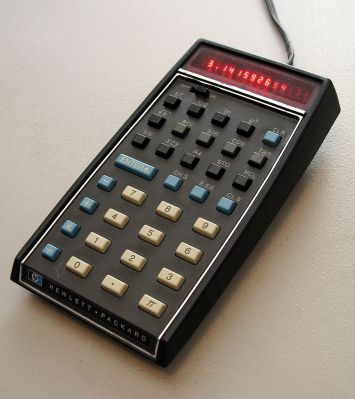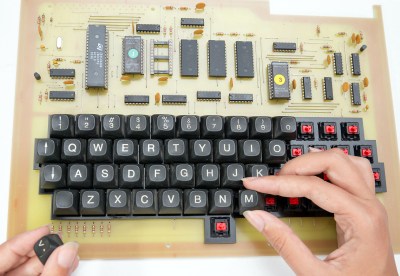With the 2021 Hackaday Remoticon fast approaching, we’ve been hard at work crafting a schedule filled with thought-provoking presentations from knowledgeable speakers; precisely what you’ve come to expect from one of our events, virtual or otherwise. We’ve already announced that Laser Interferometer Gravitational-Wave Observatory (LIGO) astrophysicist Keith Thorne will be presenting a literally out-of-this-world keynote on the incredible engineering it takes to detect gravitational waves with the highest precision interferometers ever devised, but that’s only the beginning.
To make doubly sure we’ll be able to pack every available minute of our second Remoticon with fascinating content, we’ve decided to extend the deadline on talk proposals for a few more days to see what the late-bloomers can bring to the table. If you’ve ever wanted to present at a Hackaday event, but couldn’t swing the trip to Pasadena or Belgrade, this is your chance to take the stage virtually and show off what you’re passionate about.
In the meantime, we’ve churned through enough of the early proposals to let slip the first four talks that we’ll be beaming out between November 19th and 20th. There is plenty more to announce over the coming weeks, but hopefully this gives you an idea of what we’ve got in store for our global audience of hardware hackers. So grab your Remoticon ticket right now!
Debra Ansell
Form is Function: Modular PCB Building Blocks
![]() The low cost of PCB manufacturing makes PCBs a reasonable choice to use as structural elements comprising larger modular electronic projects. I first created a system of PCB-based NanoLeaf-style tiles in June of 2020. My goal was to build an inexpensive, reconfigurable, aesthetically pleasing, sturdy system using custom PCBs and readily available parts.
The low cost of PCB manufacturing makes PCBs a reasonable choice to use as structural elements comprising larger modular electronic projects. I first created a system of PCB-based NanoLeaf-style tiles in June of 2020. My goal was to build an inexpensive, reconfigurable, aesthetically pleasing, sturdy system using custom PCBs and readily available parts.
Issues in modular systems can be different from those in more typical PCB projects. For example physical stress on boards in an assembly can create just enough torque to separate pressure connectors from contact points. I’ve spent many hours combing through the results of “board-to-board connector” searches on Mouser and Digi-Key, and invested even more time trying to design my own PCB-based connectors.
I’ll cover which connectors have worked best for me in different builds, which connectors I would love to use if they were just a bit cheaper, and why dollhouse hinges don’t actually make a great PCB connector, even though they provide terrific structural support. Anyone with an interest in PCB design, and in stretching PCBs beyond their standard use cases might be interested in this talk.
Rob Weinstein
Patently Obvious – Reverse Engineering a 45 Year Old Patent into a Fully-Functional HP-35 Replica

I’m an electrical engineer who has spent the last 30 years designing with FPGAs for the wireless communications field (mostly). When I was a young engineer, I only cared about what was the latest and greatest and I didn’t give a hoot about old stuff. Now that I’m old stuff, I’m fascinated by what came before — how the foundation of technology was built by brilliant people using only stone knives and bear skins.
On Halloween 2018, I started reverse engineering US Patent 4,001,569 in which the HP-45 pocket scientific calculator is disclosed. Using the ‘569 patent as my primary source, I built a fully-functional replica of the HP-35 calculator using a small FPGA for each of the seven ICs described in the patent. I attempted to implement the FPGA designs faithfully to what’s described in ‘569. Together, the seven ICs comprise a 56-bit, serial CPU and display subsystem that runs a calculator program stored in three of the ICs. There’s no microprocessor emulation here. The replica became fully operational on June 9th, 2021.
In this talk, I’ll attempt to explain everything I learned along the way.
Matt Venn
Open source ASICs – A Year in Perspective

Hot on the heels of his Zero to ASIC workshop from Remoticon 2020, Matt Venn is back with a retrospective covering the major developments in the world of application-specific integrated circuits, as well as a look at what’s to come in the future. Last year saw the release of SkyWater: the world’s first manufacturable, open source Process Design Kit (PDK), which is a key part of what’s required to design custom ASICs.
Since then there have been two “shuttles”, the ASIC manufacturing service set up by Google and SkyWater, with a third set to launch in October. This free program allows anyone with a fully open source design to experiment with custom silicon without the usual costs associated with fabrication.
This talk will be relevant to anyone interested in the new opportunities to make their own chips, and with four free shuttles left, there’s still plenty of time to get involved without having to pay a lot of money.
Voja Antonic
Become a Hardware Expert in 40 Minutes

If there’s anyone who can give you the knowledge you need to master hardware in under an hour, it’s Voja Antonic. Over the course of 100 slides he’ll show off the microprocessor architecture in a way that anyone can understand it. That includes basic logic gates, combinational logic, flip-flops, sequential logic, registers, CPU structure, memories, I/O and peripherals.
Voja, who famously developed the Galaksija computer in 1983, says this talk is relevant to beginners and experienced engineered alike; although it’s really targeted towards the hardware hackers and enthusiasts who want to peek into the “blackbox” of the CPU. He believes that programmers can write better and more efficient programs if they know how a CPU works internally.
With Much More to Come
These first four talks are only a fraction of what we’ve got planned for Remoticon 2021, so make sure you get your free tickets now so we have an accurate headcount come showtime. There is also a $25 ticket that includes a shirt, because what’s a hacker con if not an excuse to add another t-shirt to your collection of swag?














I for one, am greatful that Venn included a diagram with his work!
B^)